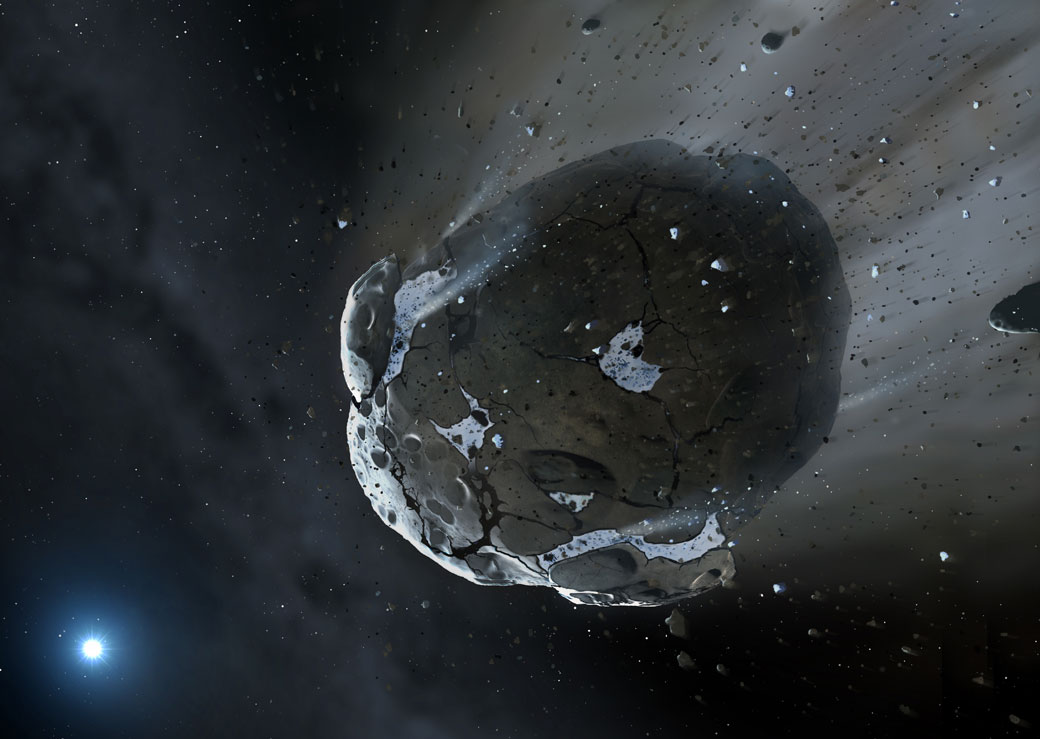TORONTO – A planetary system about 150 light years away once had the potential to contain Earth-like exoplanets, astronomers have discovered.

An asteroid that contains large amounts of water orbiting an exhausted star, called a white dwarf, was found in the star system GD 61. This is the first time that a rocky body and water have been found together outside of our solar system. Both of those are key ingredients to life.
It may be hard to believe, but although Earth is more than 70 per cent water by area, water only accounts for 0.02 percent by mass. That makes us a “dry” planet.
This has led to the belief that oceans came along after the formation of our planet, likely brought to Earth by watery asteroids – just like the one in this star system.
Hungry star eats asteroid
Astronomers found the asteroid by examining the white dwarf.
A white dwarf essentially eats material surrounding it.
In the case of GD 61, the debris polluted the atmosphere of the star allowing the astronomers to use a powerful tool to analyze the material.
What they found was a range of elements in the star’s atmosphere, including magnesium, silicon and iron, which, together with oxygen, make up rocks. The scientists then calculated the number of the elements relative to oxygen. What they found was a lot more oxygen than if there were only rocks.
- 2021 heat dome fuelled by climate change, intensified wildfire risk: study
- B.C. introduces legislation recognizing Haida Gwaii Indigenous title
- Whale experts confident B.C. orca calf will survive, find family if rescue plan succeeds
- Chemical plant shuts down after high benzene levels detected near Ontario First Nation
Read more: NASA recycles hibernating spacecraft to hunt for asteroids
“This oxygen excess can be carried by either water or carbon, and in this star there is virtually no carbon – indicating there must have been substantial water,” said co-author Boris Gänsicke, from the University of Warwick.
The scientists believe that this asteroid was one part of a larger body roughly 90 km in diameter that once orbited GD 61 before it became a white dwarf about 200 million years ago.
Astronomers liken the discovery to scientists looking back at our solar system 6 billion years from now: seeing the rocky remains around our burned out sun would indicate that our solar system once had rocky planets with water circling our star.
The paper, to be published in the journal Science on Oct. 11 details their research which used the Hubble Space Telescope.
“The finding of water in a large asteroid means the building blocks of habitable planets existed – and maybe still exist – in the GD 61 system, and likely also around substantial number of similar parent stars,” said lead author Jay Farihi, from Cambridge’s Institute of Astronomy.
“Our results demonstrate that there was definitely potential for habitable planets in this exoplanetary system.”


Comments